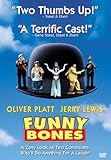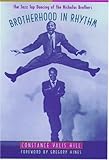|
Sidney Poitier, Bill Cosby
Uptown Saturday Night (1974)
DVD (Includes Harold Nicholas)
|

|
|
Diahann Carroll, Harold Nicholas
The Five Heartbeats
20th Century Fox
DVD (Includes Harold Nicholas)
|

|
|
Oliver Platt, Jerry Lewis
Funny Bones (1995)
DVD (Includes Harold Nicholas)
|

|
|
Various Artists
Broadway - The American Musical (PBS Series) (2004)
DVD (Includes Harold Nicholas singing "Come Rain or Come Shine")
|

|
|
Eddie 'Rochester' Anderson, Matthew 'Stymie' Beard, Ada Brown, Cab Calloway, Benny Carter
Stormy Weather
20th Century Fox
DVD
|

|
|
George Montgomery, Ann Rutherford, Glenn Miller, The Glenn Miller Orchestra, Lynn Bari
Orchestra Wives
20th Century Fox
DVD
|

|
|
Don Ameche, Betty Grable, Carmen Miranda, Charlotte Greenwood, J. Carrol Naish
Down Argentine Way
20th Century Fox
DVD
|

|
|
Judy Garland, Gene Kelly, Walter Slezak, Gladys Cooper, Reginald Owen, Harold Nicholas, Fayard Nicholas
The Pirate
DVD
|

|
|
Alice Faye, Betty Grable, Jack Oakie, John Payne, Fayard Nicholas, Harold Nicholas
Tin Pan Alley
Fox Home Entertainme
VHS
|

|
|
|
|
|
Harold Nicholas
Dancer, Singer
(1921 - 2000)
|
|

|
|
|
Harold Nicholas and his brother Fayard, seven years older, grew up watching their parents’ band play for vaudeville acts. They mimicked the great dancers of the time and created a dazzling act of their own. In 1932 they were booked into the Cotton Club where they astonished audiences with their jazzy, acrobatic, tap act. They appeared in a movie short in 1932 and made their first Hollywood film, Kid Millions, in 1934. They regularly stopped the show in their Broadway debut, Ziegfeld Follies of 1936. While on tour the brothers saw the great European ballet companies and began to incorporate classical forms into their dance. They refined this technique under the famous ballet master, George Balanchine, who incorporated their act into the 1937 Broadway show, Babes in Arms. During the ‘40s the brothers took their act around the world and appeared in several Hollywood musicals. Unfortunately the racial barriers of the time prevented their interacting with white co-stars, but their phenomenal routines were the highlight of movies such as Orchestra Wives (1942) where they danced to Glenn Miller’s orchestra. On Broadway they starred in St. Louis Woman (1946), an all-black musical, where Harold introduced the now classic “Come Rain or Come Shine” with co-star Ruby Hill. Their last film together was The Pirate (1948) where they broke the color barrier and danced with Gene Kelly. After Fayard retired, Harold moved to France and continued a solo career. The brothers won a long list of awards, and in 1992 A&E presented a television special based on their careers, The Nicholas Brothers: We Sing and We Dance.
- Sandra Burlingame |
|
|
|
|
|


